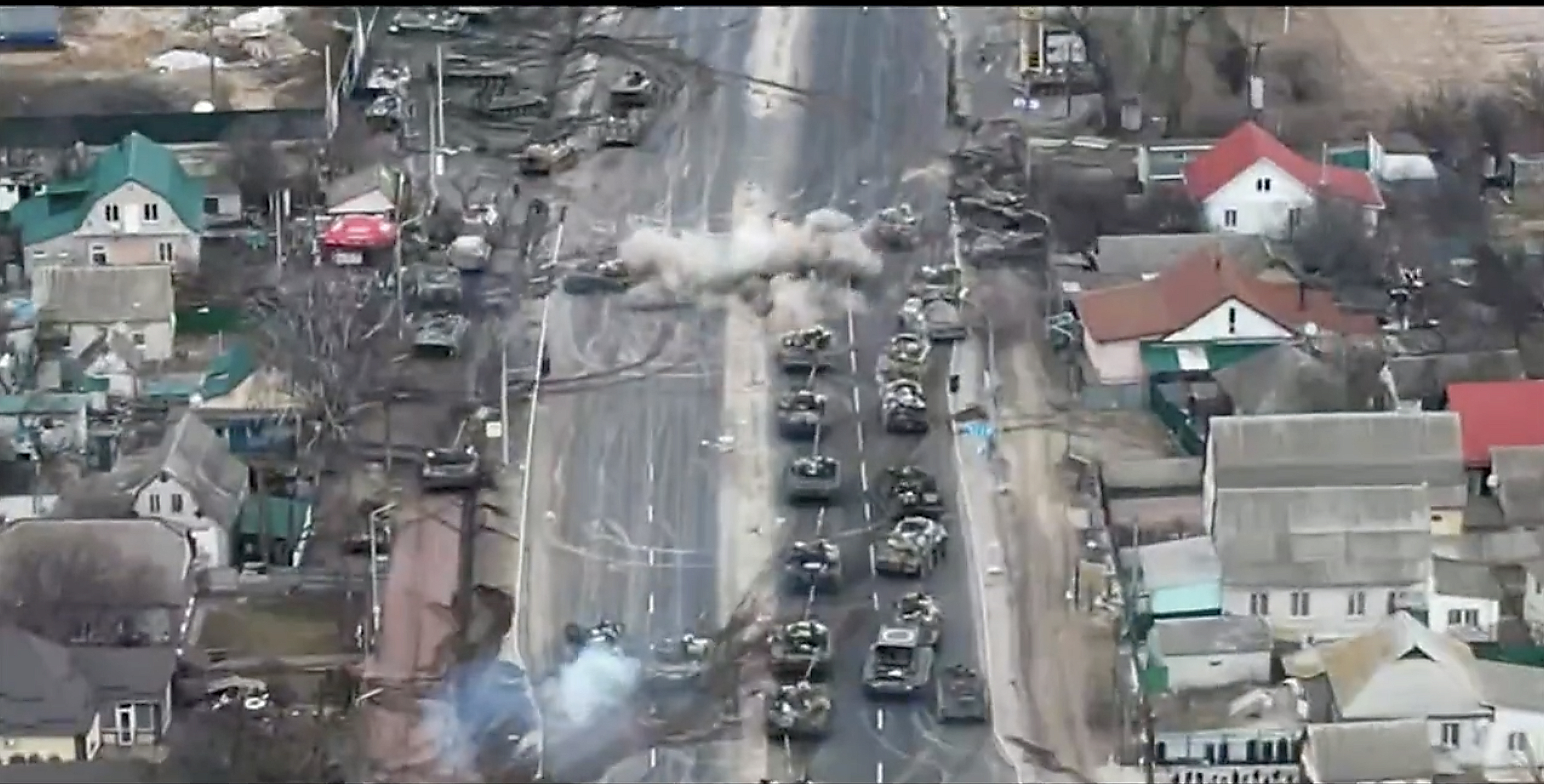Ukraine's Great Need for Heavy Artillery
On 26 April, the U.S. initiated the Ukraine Contact Group, which will coordinate military equipment and weapons aid from at least 43 states to Ukraine. One of the group’s priorities will be to provide heavy artillery and ammunition, which are critical to Ukraine’s defence. With the focus of Russia’s operations on the east and south of Ukraine, the defenders are running out of artillery systems and munitions, which should be re-filled quickly. The role of artillery in Russia’s operational art and tactics also have implications for defence planning for the Eastern Flank of NATO.
 Ukrainian Military Defense/ Zuma Press/ FORUM
Ukrainian Military Defense/ Zuma Press/ FORUM
What kind of artillery capabilities do Russia and Ukraine have?
The foes possess almost identical or similar artillery capabilities, based on howitzers and multiple-launcher rocket systems mainly produced in the Soviet Union. Both sides are capable of striking the enemy with self-propelled or towed howitzers in 122 mm and 152 mm calibres, at ranges of standard ammunition up to 15 and 17 km, and nonstandard ammunition of up to 21 and 33 km. Both armies also use BM-21 Grad, BM-27 Uragan, and BM-30 Smerch rocket systems with, respectively, 20, 35, and 70 km ranges, capable of striking with high-explosive, fragmentation, anti-tank, cluster munition, and thermobaric warheads. Before the start of the war, Russia had between 6,000 and 10,000 artillery systems, while Ukraine had around 600 howitzers and 350 multiple-launcher rocket systems. Russia also has large stocks of munitions for both types of heavy artillery. Moreover, during the war, Russian air and missile strikes have destroyed the majority of Ukraine’s munitions warehouses and repair plants.
What are the differences in the tactics between Russia and Ukraine?
There is a lack of credible and detailed data on losses on both sides in the war, but visual monitoring of social media images suggest that heavy artillery might have caused around 75-80% of deaths among troops and civilians, as well as massive destruction of military equipment and civilian infrastructure. Artillery is crucial to both the Russian and Ukrainian military operations. Despite the technical modernisation of some Russian artillery systems, its doctrine still assumes massed but imprecise strikes on military and civilian targets to protect Russian forces from direct contact with the enemy to or save them from needing to assault well-prepared and defended urban areas (the most dramatic example of urban warfare in the current war is Mariupol). Russia’s approach will continue during further offensive operations, especially if frontlines become static or turn to trench warfare. At the same time, Ukraine, which is running out of artillery munitions and lacks production capabilities, must use more economic and precise attacks on Russian forces. The differences in tactics are also visible with Ukraine’s use of rare counter-artillery radars and mass use of reconnaissance of targets by cheap and simple small drones.
How can Western countries help Ukraine improve its strategic situation?
There are many options for augmenting Ukraine’s artillery for the next phase of the war. These may be discussed in the monthly meetings of the Contact Group. First, Central European states have considerable reserves and production lines of munitions for 122 mm howitzers and Grad-type rockets, which may be immediately transferred to Ukraine. Under pressure from the U.S. to make these transfers, Israel (which produces similar munitions) may decide to deliver these to Ukraine, too. This option is not accompanied by additional training of Ukrainian troops. Second, the NATO Eastern Flank states and Finland are changing from post-Soviet artillery systems to the NATO-standard 155 mm howitzer, which may encourage transfers of this older equipment and spare munitions to Ukraine. Third, there already have been transfers of American howitzers and 155 mm munitions to Ukraine. Similar transfers were announced also by the UK, Canada, Netherlands, and France. This opens up the possibility of further transfers of spare NATO-standard artillery munitions for Ukraine from both member and partner countries, as well as outside the Alliance. However, this option requires additional training of Ukrainian troops in the new howitzers, which may cause delays in their introduction to the battlefield. Fourth—but independent of the options above—Ukraine needs additional quantities of artillery radars, as well as more drones for effective direction of its artillery counter-battery fire.
What are the initial implications for the defence of NATO states?
The Alliance must weigh its doctrine of precision artillery strikes based on expeditionary and counter-insurgency missions against massed conventional Russian forces, as it may not be effective. Currently, the majority of NATO artillery systems have shorter ranges than the Russian systems, and Russia has a quantitative advantage in this area, even with huge losses in Ukraine. Due to this advantage, Russian military planners may still assume tactical victories over neighbouring states’ armies in conventional war scenarios. Moreover, in such hypothetical scenarios of a Russian war with NATO, the allies would be forced to balance Russia’s advantage with not only their own artillery but also with much wider use of close combat support air forces and attack helicopters, armed drones, and loitering munitions. Therefore, each decision to strengthen allied forces on the Eastern Flank must also take into account the need for more howitzers and rocket artillery, as well as additional NATO reconnaissance assets in Central Europe in both the quantity of units and exercises. The NATO allies must also invest in filling capability gaps, such as developing and deploying guided munitions with longer ranges for the standard howitzer.


